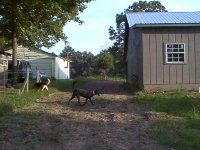Beltzington
Platinum Member
I requested a quote for a 30x40 pad and told the contractor I would take care of the grading as I have a BB and tractor. After thinking about this I realize having a BB is not the same as knowing how to use one. The ground is gently sloping and I estimative is 1-foot higher on the uphill side to bring it close to level. Should I give it a go or hire it done? I have the time and patience but I do not want to destroy the building sight in the process.
Second question - anyone know what 1-cubic yard of fiber reinforce ready mix is going for delivered?
Second question - anyone know what 1-cubic yard of fiber reinforce ready mix is going for delivered?

